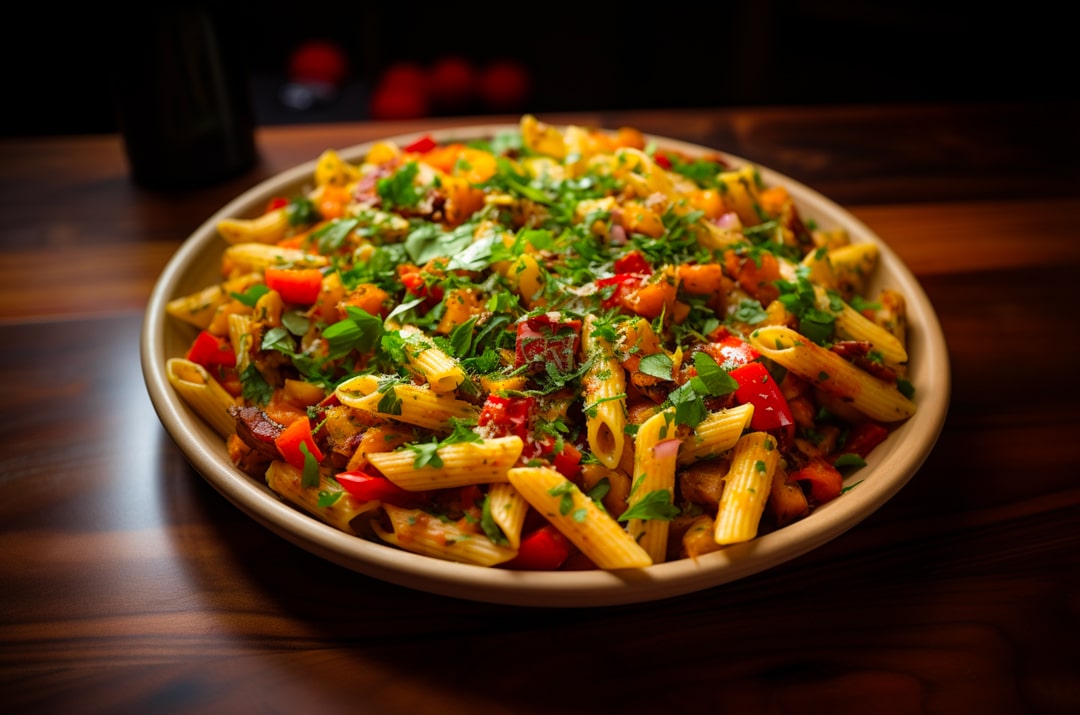Rasta Pasta: How This Meal Gets Credits from Customers

There are hundreds of pasta variations around the world. Mostly the recipes including pasta belong to Italian, South-Eastern Asian, and American cooking traditions. Yet there is one recipe which was inspired by the diversity and brightness of the Caribbean heritage, namely, Jamaican. That’s Rasta Pasta, a great combo of tastes, rich spices, bright colors, and nutrients you need to get energized!
When and Where Was Rasta Pasta Created
The roots of Rasta Pasta belong to Jamaica, the cradle of Rastafarian culture. Yet its inventor, chef cook Lorraine Washington was neither Jamaican native nor Rastafarian. A curious lady who spent years working as a flight attendant was deeply interested in culinary and its traditions in various regions of the world. Her knowledge of various traditions and techniques in gastronomy was deep, and it helped her to develop a real masterpiece on the plate further called Rasta Pasta.
It was in 1985 when chef Lorraine worked at the Paradise Yard Restaurant in Negril. She decided to add to hand-made fettuccine pasta some jerk spices and local fruit ackee. The results were double bright with their colors mixed on the plate and their tastes which were true Caribbean. Then some workers came for dinner at the restaurant and got this newly created dish to taste. They called it Rasta Pasta because the colors of the dish reminded the yellow-red-green colors of the Jamaican flag, and the fettuccini on the plate looked like dreadlocks which are one of the Rastafarian haircut traditions. So, the meal started its way with the name Rasta Pasta. Chef Lorraine Washington added it to the casual menu in the restaurant and then picked it up with her when she relocated to the US and started her healthy meals brand. Rasta Pasta is one of the bestsellers by Washington and now it is available almost all over America.
The Basic Recipe and Variations of Rasta Pasta
What is the basis of Rasta Pasta, you may ask? The backbone of the recipe consists of the following ingredients:
- Fresh fettuccine pasta, preferably homemade.
- Jerk seasoning.
- Bell peppers.
- Tomato sauce.
- Ackee or coconut milk.
You may be surprised but in its origin, Rasta Pasta is a vegetarian meal. To cook it, you have to boil some fettuccini al dente. Make tomato sauce and sauté it on the pan adding coconut milk, ackee fruit, and green bell peppers. Season the sauce with jerk spices. Make a bed from the sauce and put fettuccini on it. That’s all!
Yet, today there are also multiple variations of Rasta Pasta which suit meat lovers or vegetarians who include dairy products and seafood to their menu. So, you can enrich the taste of this dish by adding:
- Meat proteins in the form of classy Jamaican jerk chicken or oxtails and other types of meat.
- Seafood i.e., shrimps or salmon.
- Cheese to make it more likely Italian pasta and cream instead of ackee or coconut milk.
Besides, the variations include different spices and hot peppers to make the taste hotter.
As for the healthy aspect, it fully adheres to the principles of healthy meals. This type of pasta consists of a balanced combo of slow carbs, veg fats, and proteins (in its non-vegetarian variation). It is good for digestion due to spicy seasoning which boosts appétit and helps to speed up metabolism. Besides, it is rich in vitamins and microelements. As for the calories, their number varies from 400 calories to 700.
Rasta Pasta in Media and Culture
Good naming for this dish helped it to become popular. Besides, Rasta Pasta is often mentioned in the cultural context.
- It is widely used for naming restaurants or bistros which offer pasta or Jamaican-style food.
- In 2009, this dish became the topic of a reggae song of a similar name created by Josh Tweek. Mercury also sang the song Rasta Pasta.
As you can see, great meals often are created occasionally. But the results bring us incredible pleasure. Today, you can try your Rasta Pasta even without cooking it. It is available in our menu of healthy meals prep and delivery. So, we offer you to color your dining experience with this rich and bright Caribbean food.